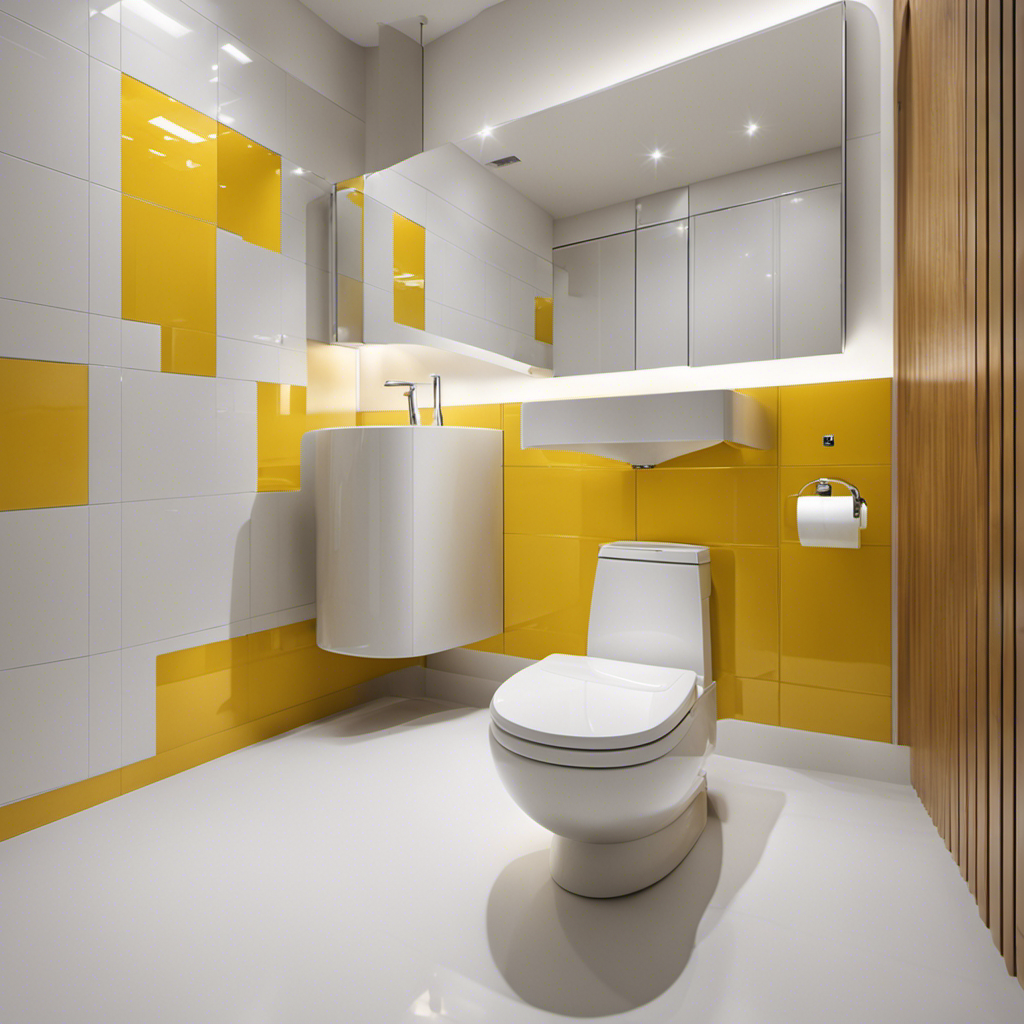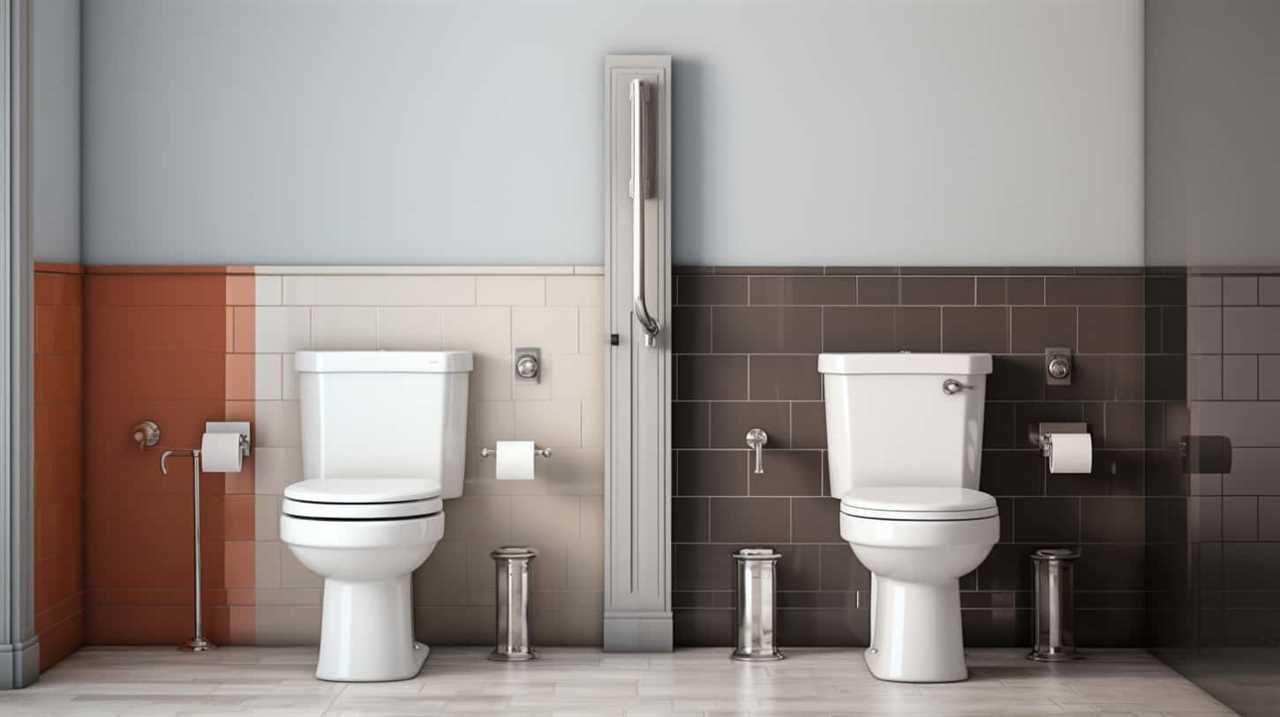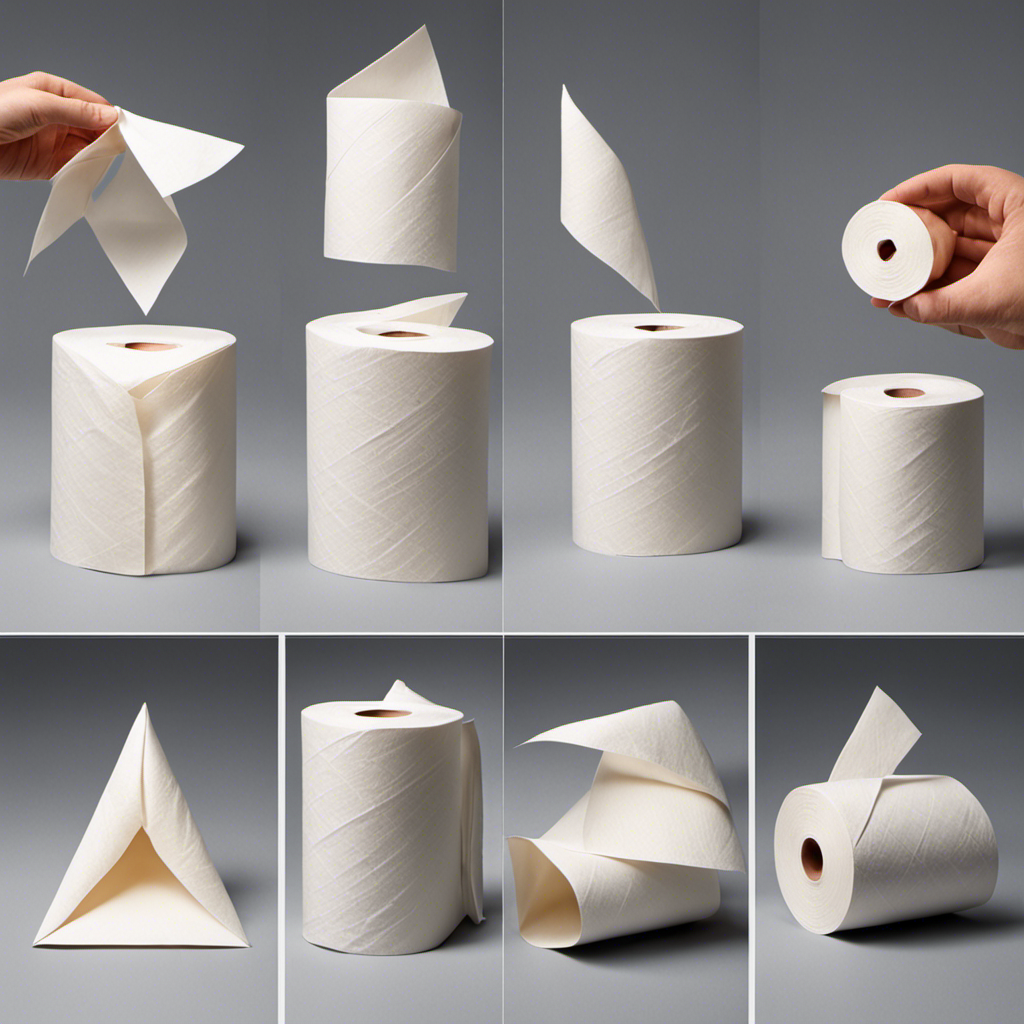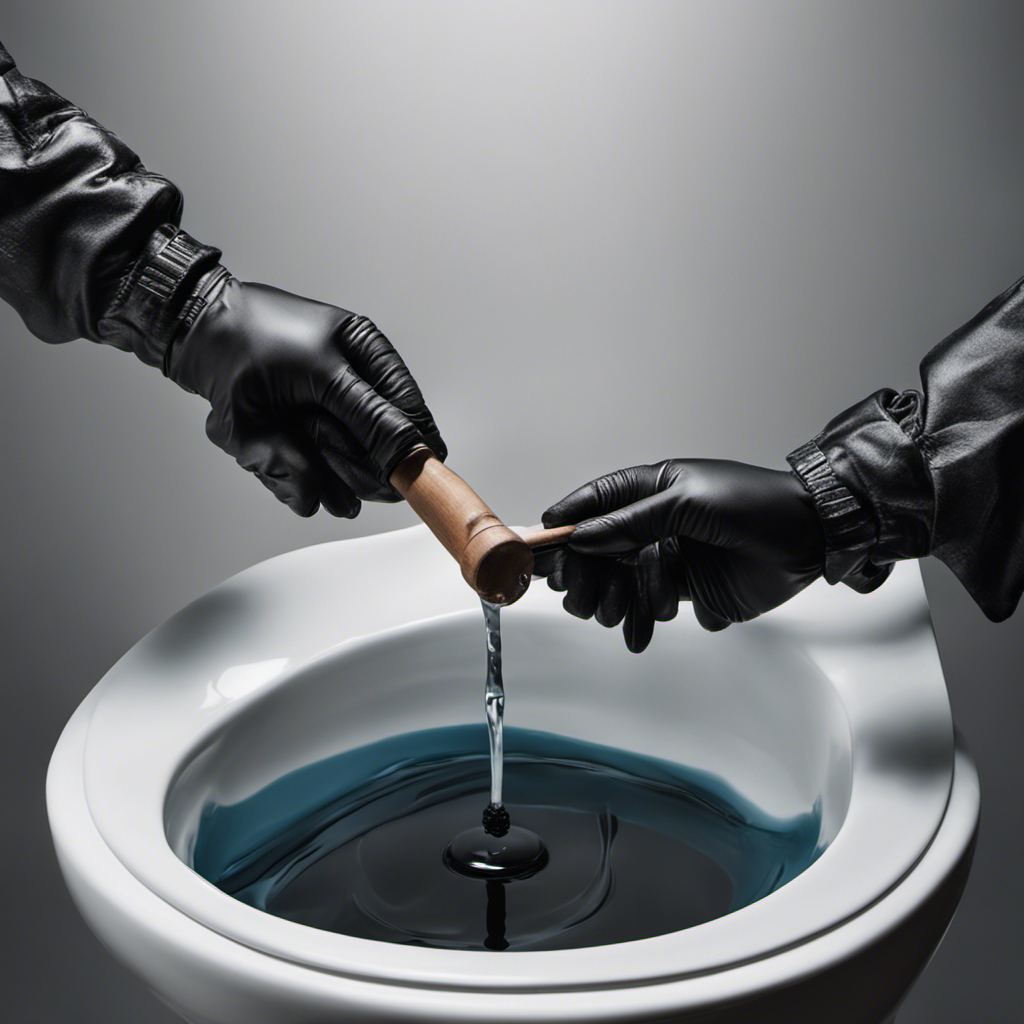Hey there, folks! Ever found yourself in a sticky situation with an overflowing toilet? Don’t fret, I’ve got you covered.
In this informative guide, I’ll walk you through the step-by-step process of getting that water out of your toilet using a variety of techniques. From assessing the cause of the overflow to using a plunger or even a wet/dry vacuum, I’ll show you how to handle this pesky problem like a pro.
So, let’s dive in and get that toilet back to its sparkling clean state!
Key Takeaways
- Check if the toilet bowl is clogged
- Use a plunger or plumbing snake to clear blockages
- Shut off the water supply completely
- Use a bucket or towels to bail out the water if other methods don’t work
Assess the Cause of the Overflow
First, check if the toilet bowl is clogged before attempting to fix the overflow. A clogged toilet is a common reason for overflow. To prevent this, avoid flushing large amounts of toilet paper at once or disposing of non-flushable items in the toilet.
If the toilet continues to overflow even after shutting off the water supply, there are a few steps you can take. First, remove the tank lid and lift the float to stop the water flow. Next, use a plunger to try and clear any blockages in the drain. If this doesn’t work, you may need to use a plumbing snake to remove any stubborn clogs.
If all else fails, it’s best to call a professional plumber for assistance.
Shut Off the Water Supply
To shut off the water supply, you’ll need to locate the shut-off valve usually found behind the toilet. This valve controls the flow of water to the toilet, and turning it off is the first step in preventing further water damage.
Here are some important things to keep in mind:
-
Locate the shut-off valve: Look for a small valve connected to a water pipe behind the toilet. It may be a round handle or a lever that you can turn off by rotating it clockwise.
-
Turn off the water supply: Once you have found the shut-off valve, turn it off completely. This will stop the water from flowing into the toilet tank.
-
Consider preventive measures: To avoid future water emergencies, it’s a good idea to install a shut-off valve that can be easily accessed and operated.
Use a Plunger to Remove the Water
Using a plunger is an effective way to remove excess water from the toilet. It’s important to create a strong seal between the plunger and the drain opening to ensure maximum suction and effectiveness. Start by placing the plunger over the drain opening and pressing it down firmly. Then, push and pull the plunger vigorously, using a pumping motion. This will create suction and help dislodge any clogs or blockages that may be causing the water to accumulate.
If using a plunger doesn’t solve the problem, there are alternative methods for removing water from the toilet. One option is to use a bucket or towels to bail out the water. This can be done by scooping the water out with a bucket or soaking up the water with towels and then wringing them out into a separate container.
Use a Bucket or Towels to Bail Out the Water
Next, you’ll want to grab a bucket or some towels to help remove the excess water from the toilet. Here are some alternative methods you can try before seeking professional help:
-
Use a bucket: Start by placing a bucket next to the toilet. Then, using a cup or ladle, scoop out as much water as you can and pour it into the bucket. Repeat this process until the water level is low enough for you to safely work on the toilet.
-
Use towels: If you don’t have a bucket, you can also use towels to soak up the water. Lay down several towels around the toilet bowl and press them firmly against the floor to absorb the water. Once the towels are saturated, wring them out into a sink or bathtub.
-
Use a wet/dry vacuum: If you have access to a wet/dry vacuum, this can be a highly effective method for extracting the water. Simply attach the vacuum hose to the appropriate setting and carefully suction out the water from the toilet bowl.
When you’ve successfully removed the excess water using these methods, you can then move on to the next step of using a wet/dry vacuum to extract the remaining water.
Use a Wet/Dry Vacuum to Extract the Water
Once the excess water has been removed, you can then proceed to use a wet/dry vacuum to extract any remaining liquid. This method is highly effective in getting rid of excess water from your toilet.
The wet/dry vacuum is designed to handle both wet and dry materials, making it the perfect tool for this task. To begin, ensure that the vacuum is set to the wet mode. Next, carefully insert the vacuum hose into the toilet bowl, reaching as far down as possible.
Turn on the vacuum and slowly move the hose around to suck up the remaining water. Be thorough in this process, ensuring that all water is extracted.
Frequently Asked Questions
Can I Use a Plunger to Remove Water From a Clogged Sink?
Yes, you can use a plunger as a DIY water extraction method for a clogged sink. However, if you’re looking for a plunger alternative, there are other options available.
What Should I Do if Shutting off the Water Supply Doesn’t Stop the Overflow?
If shutting off the water supply doesn’t stop the overflow, it’s an emergency. Call an emergency plumber immediately. In the meantime, grab towels and start soaking up the water to prevent further damage.
Is It Safe to Use a Wet/Dry Vacuum to Extract Water From an Electrical Appliance?
Using a wet/dry vacuum for water extraction can be effective, but it’s important to consider electrical appliance safety. Ensure the vacuum is designed for wet use and follow manufacturer guidelines to avoid any risks.
Can I Use a Hairdryer to Speed up the Drying Process After Removing the Water?
Sure, using a hairdryer can help speed up the drying process after removing water. However, it’s important to exercise caution as water and electricity don’t mix well. Be safe and use appropriate measures.
How Do I Prevent Toilet Water From Spreading and Causing Damage to the Surrounding Area?
To prevent water damage and contain the spread of toilet water, you can use various containment methods such as placing towels or absorbent materials around the affected area and using a wet/dry vacuum to remove the water.
Conclusion
So there you have it, folks! Follow these simple steps to become the ultimate toilet water extraction expert.
With just a few tools and a little bit of determination, you can conquer any toilet overflow situation.
Remember, shutting off the water supply is key, and using a plunger, bucket, towels, or even a wet/dry vacuum will help you get rid of that pesky water in no time.
You’ll be the hero of your household, saving the day and ensuring a clean and dry bathroom.
Don’t wait for the water to rise, take action now and become the master of toilet water removal!










